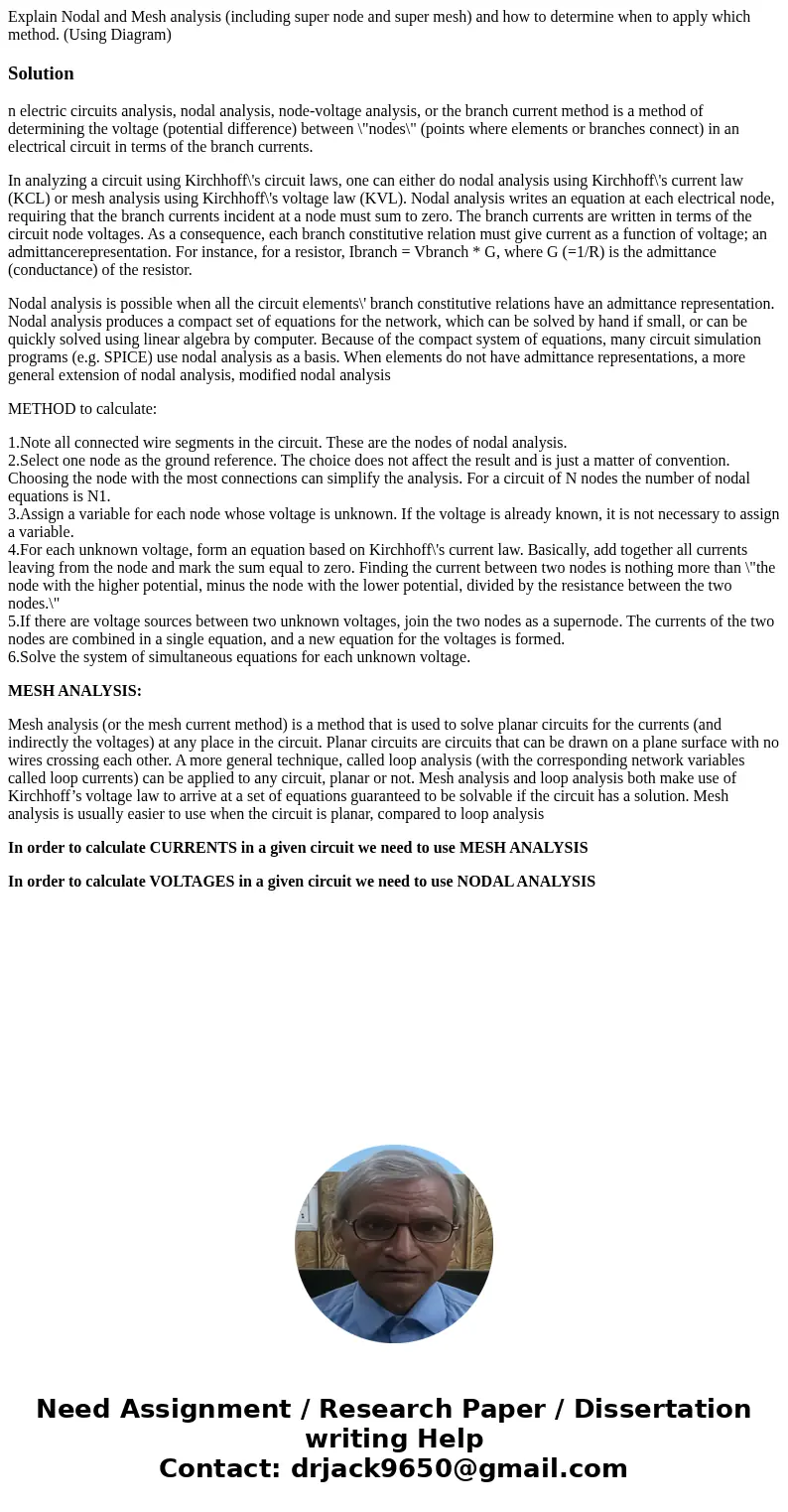Explain Nodal and Mesh analysis including super node and sup
Solution
n electric circuits analysis, nodal analysis, node-voltage analysis, or the branch current method is a method of determining the voltage (potential difference) between \"nodes\" (points where elements or branches connect) in an electrical circuit in terms of the branch currents.
In analyzing a circuit using Kirchhoff\'s circuit laws, one can either do nodal analysis using Kirchhoff\'s current law (KCL) or mesh analysis using Kirchhoff\'s voltage law (KVL). Nodal analysis writes an equation at each electrical node, requiring that the branch currents incident at a node must sum to zero. The branch currents are written in terms of the circuit node voltages. As a consequence, each branch constitutive relation must give current as a function of voltage; an admittancerepresentation. For instance, for a resistor, Ibranch = Vbranch * G, where G (=1/R) is the admittance (conductance) of the resistor.
Nodal analysis is possible when all the circuit elements\' branch constitutive relations have an admittance representation. Nodal analysis produces a compact set of equations for the network, which can be solved by hand if small, or can be quickly solved using linear algebra by computer. Because of the compact system of equations, many circuit simulation programs (e.g. SPICE) use nodal analysis as a basis. When elements do not have admittance representations, a more general extension of nodal analysis, modified nodal analysis
METHOD to calculate:
1.Note all connected wire segments in the circuit. These are the nodes of nodal analysis.
2.Select one node as the ground reference. The choice does not affect the result and is just a matter of convention. Choosing the node with the most connections can simplify the analysis. For a circuit of N nodes the number of nodal equations is N1.
3.Assign a variable for each node whose voltage is unknown. If the voltage is already known, it is not necessary to assign a variable.
4.For each unknown voltage, form an equation based on Kirchhoff\'s current law. Basically, add together all currents leaving from the node and mark the sum equal to zero. Finding the current between two nodes is nothing more than \"the node with the higher potential, minus the node with the lower potential, divided by the resistance between the two nodes.\"
5.If there are voltage sources between two unknown voltages, join the two nodes as a supernode. The currents of the two nodes are combined in a single equation, and a new equation for the voltages is formed.
6.Solve the system of simultaneous equations for each unknown voltage.
MESH ANALYSIS:
Mesh analysis (or the mesh current method) is a method that is used to solve planar circuits for the currents (and indirectly the voltages) at any place in the circuit. Planar circuits are circuits that can be drawn on a plane surface with no wires crossing each other. A more general technique, called loop analysis (with the corresponding network variables called loop currents) can be applied to any circuit, planar or not. Mesh analysis and loop analysis both make use of Kirchhoff’s voltage law to arrive at a set of equations guaranteed to be solvable if the circuit has a solution. Mesh analysis is usually easier to use when the circuit is planar, compared to loop analysis
In order to calculate CURRENTS in a given circuit we need to use MESH ANALYSIS
In order to calculate VOLTAGES in a given circuit we need to use NODAL ANALYSIS

 Homework Sourse
Homework Sourse